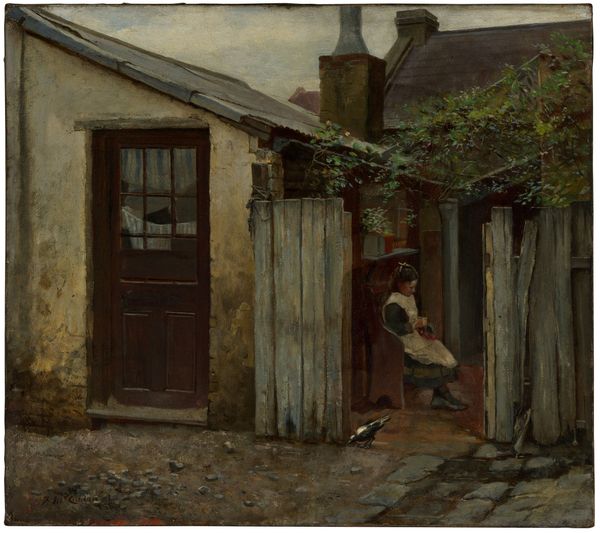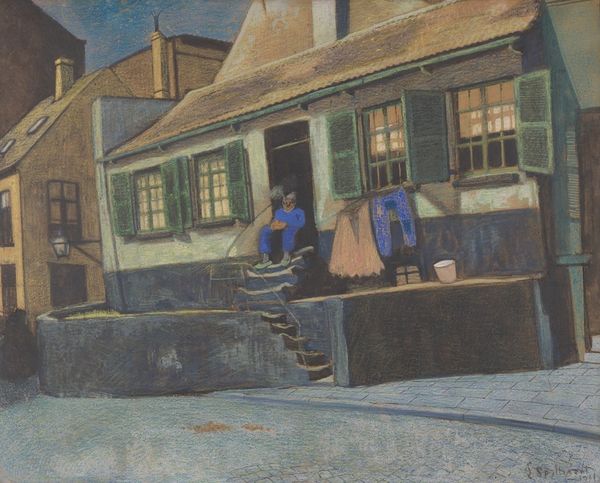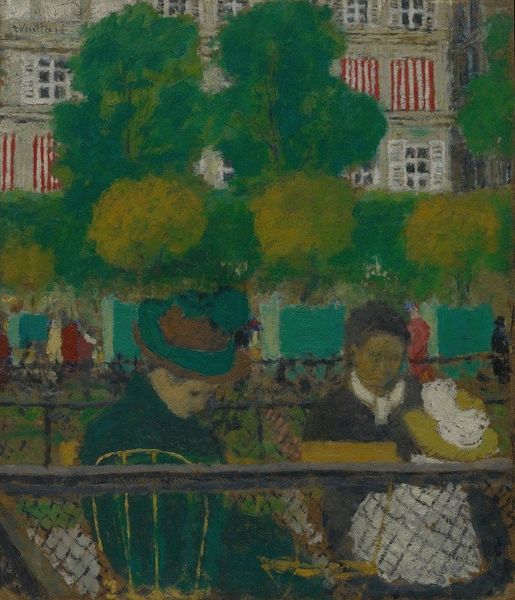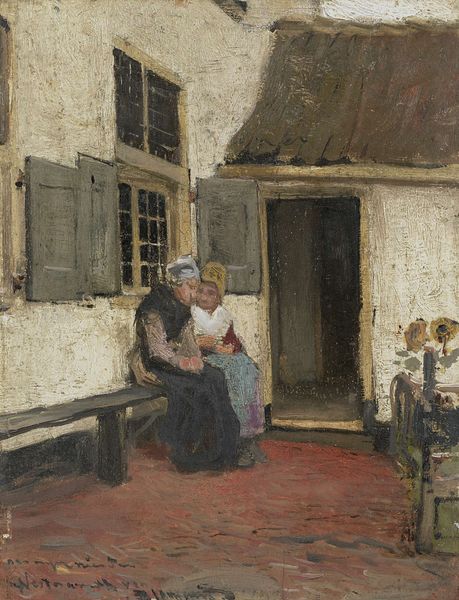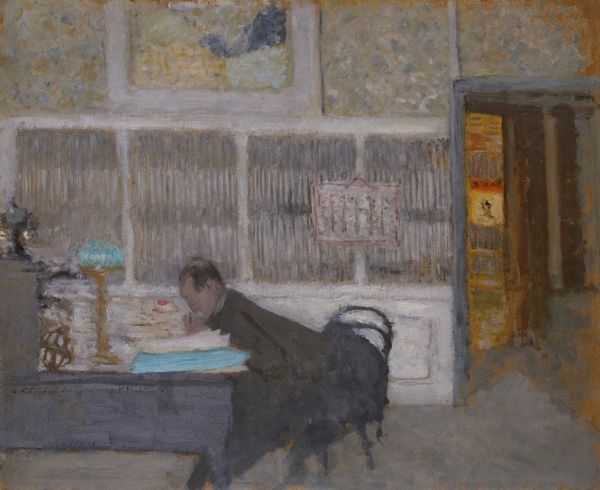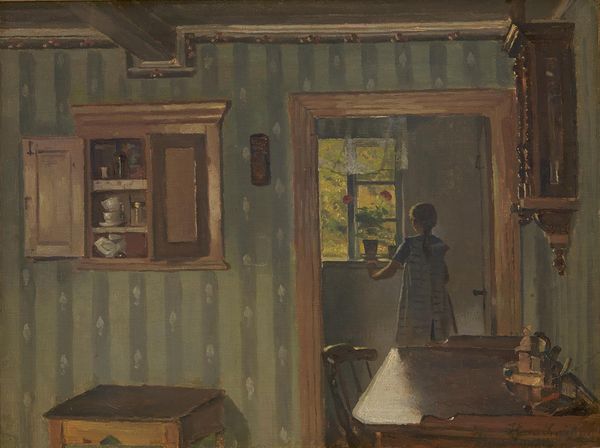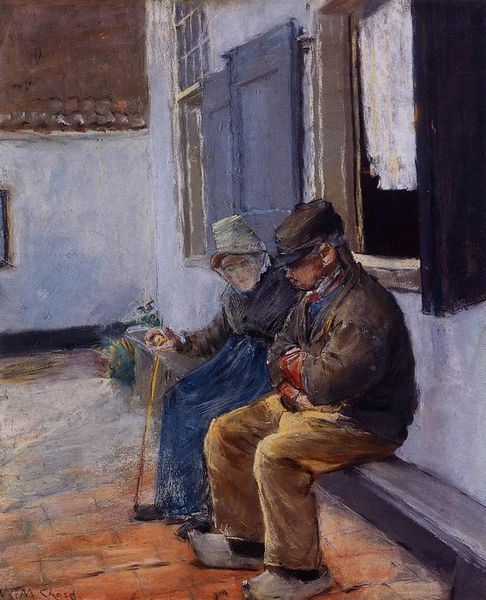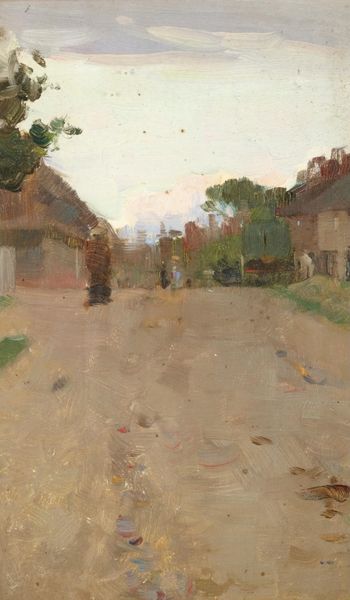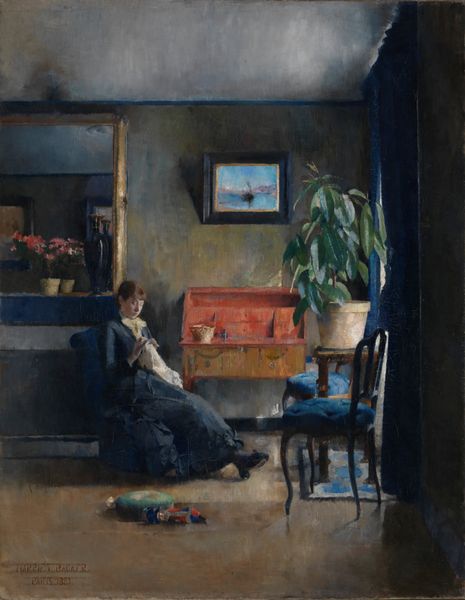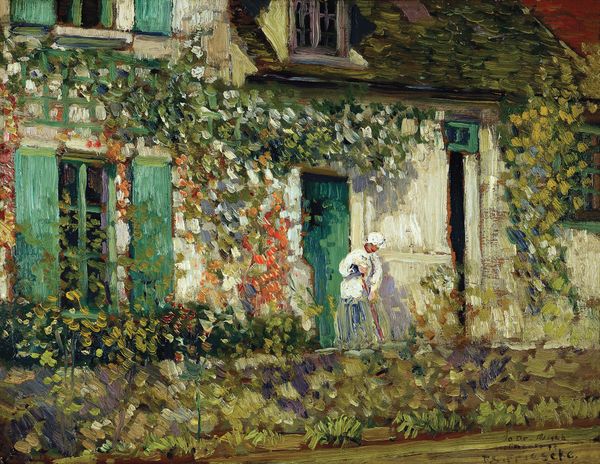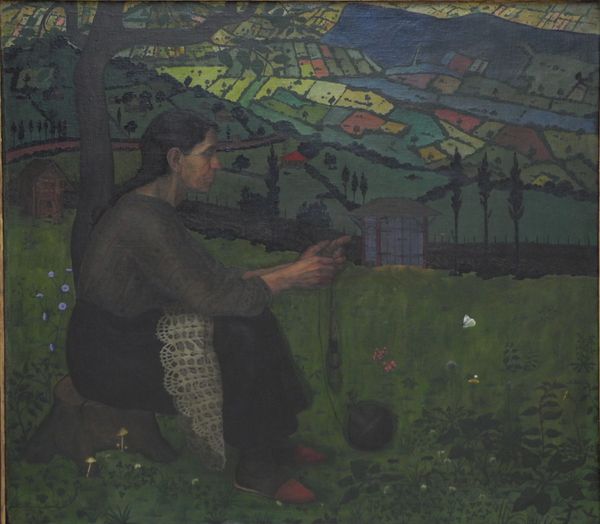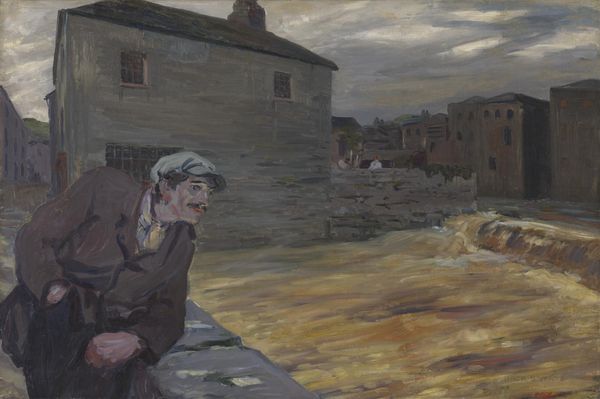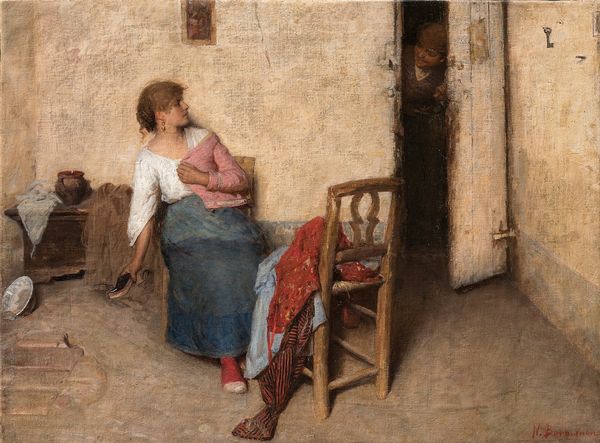
painting, oil-paint
#
portrait
#
dutch-golden-age
#
painting
#
oil-paint
#
landscape
#
oil painting
#
genre-painting
#
modernism
Copyright: Public domain
Curator: Let’s turn our attention to Jan Mankes' “Female in front of her house,” painted in 1914. I’m drawn to how Mankes captures the everyday here, the intersection of domesticity and the feminine in this period. Editor: My first impression is of stillness, a quiet simplicity. The limited color palette and the very visible brushstrokes lend the work a tactile quality. The woman seems so self-contained. Curator: Absolutely. This painting is part of Mankes’ broader exploration of solitude and the intimate spaces women occupied. Her averted gaze makes her an interesting subject—what do you think she represents in the social milieu of the time? Editor: I find the materials tell a compelling story, too. Look at the rough texture of the brickwork rendered in oil paint, the way it suggests the weight and permanence of the building. And then consider the textile she’s working on, perhaps a symbol of labor, the production of necessary materials within a humble domestic setting. Curator: Yes, there's that connection of her body to the architecture, but it makes me think also of how Dutch Golden Age traditions were being reinterpreted through the lens of early modernism. Her social identity as well as her location situate her as essential, if invisible, labor. Editor: Precisely. The labor becomes visible because Mankes gives it such focus. The domestic labor contrasts starkly with labor depicted as part of high art in his contemporary male dominated industry. How often do we look at something being crafted? A constant action, yet unseen. Curator: Mankes gives the everyday, domestic sphere dignity, acknowledging this woman’s existence in this time and place, connecting the personal and the socio-political spheres. He allows us, or rather invites us, to analyze the way we see a Dutch domesticity, and consider labor. Editor: I concur. Mankes' work encourages a deep appreciation for the overlooked aspects of everyday life and production. Curator: A perfect reflection, one that invites viewers to connect to both history and personal reflection. Editor: Indeed. Art’s highest calling in material culture and its processes.
Comments
No comments
Be the first to comment and join the conversation on the ultimate creative platform.
